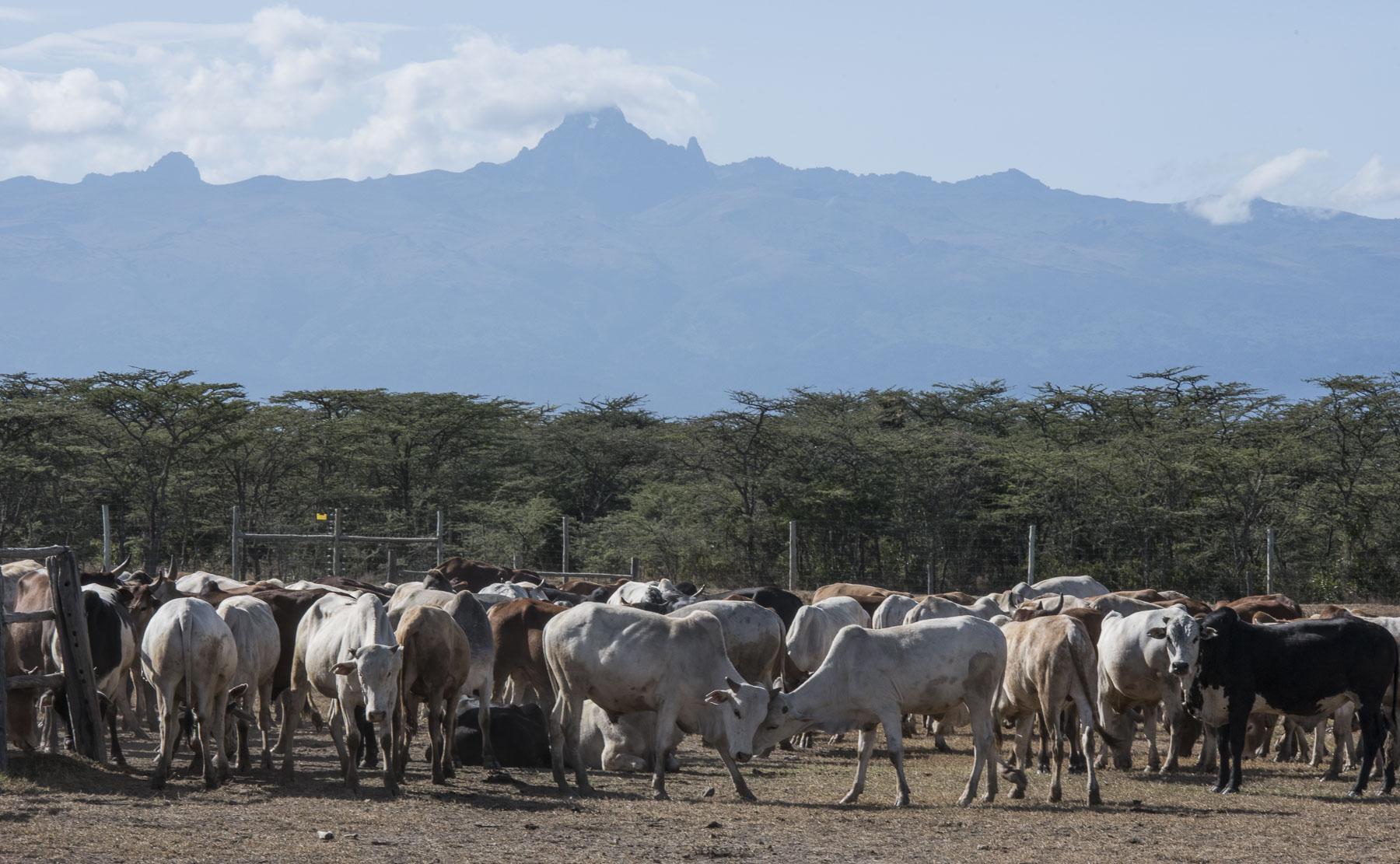Wildlife conservancy grows cattle feed to fend off drought
Planting a corner of this Kenyan ranch with grass to share with herders in dry times deters intrusions into wildlife habitat

Your support helps us to tell the story
From reproductive rights to climate change to Big Tech, The Independent is on the ground when the story is developing. Whether it's investigating the financials of Elon Musk's pro-Trump PAC or producing our latest documentary, 'The A Word', which shines a light on the American women fighting for reproductive rights, we know how important it is to parse out the facts from the messaging.
At such a critical moment in US history, we need reporters on the ground. Your donation allows us to keep sending journalists to speak to both sides of the story.
The Independent is trusted by Americans across the entire political spectrum. And unlike many other quality news outlets, we choose not to lock Americans out of our reporting and analysis with paywalls. We believe quality journalism should be available to everyone, paid for by those who can afford it.
Your support makes all the difference.Here in the wild where most vegetation sprouts naturally and wildlife roam freely, a deliberate effort has been taken by El Karama to plant grass as fodder to sustain cattle within the ranch and in the surrounding pastoralist’s villages during the dry season.
The ranch has partnered with Northern Rangelands Trust, which supports more than 30 community conservancies in northern Kenya, to grow grass in 400-acre portion of land to provide fodder banks as a coping strategy during drought.
“The project is aimed at mitigating the effects of drought, which has been recurring in the area. Once mature, the grass, planted in October, will feed cows within the ranch and be sold to the neighbouring pastoralist communities at an affordable price,” says Steven Kipketer, who is in charge of the fodder project in El Karama.
Last year, Laikipia was one of the counties that was worst affected by drought that hit Kenya, with the phenomenon being declared a national disaster. Members of the predominantly pastoralist community in the area, which is surrounded by several ranches and conservancies, bore the brunt of the harsh dry conditions.
“Owing to conservation efforts by the surrounding ranches and conservancies, the area had some pasture. But invasion of cattle from other areas where pasture had been depleted due to widespread drought regenerated into conflict leading to massive loss of livestock and wildlife,” says Peter Mwangi Wangari, the local chief.
According to Wangari, drought in the area is increasingly frequent over the past decade owing to massive deforestation and population growth increasing pressure on resources.
“Due to population increase, people have settled on areas that were once wildlife habitats pushing them to ranches and conservancies. Logging of trees for charcoal burning has further made the area vulnerable to drought,” says Wangari.
Fodder banks in El Karama provide hope that even if the drought recurs, pastoralists have a place they can source feeds for their livestock.
Locals are being encouraged to adopt better cattle breeds and reduce pressure on grazing lands. Grazing committees between the community and ranches have effectively helped coordinate grazing during dry seasons.
The ranch has adopted conservation agriculture in growing the grass to protect the natural surroundings where livestock and wildlife co-exist harmoniously.
“We are careful about how we cultivate our land. We incorporate diverse conservation agriculture techniques such as zero-tilling and water banking. There is no use of chemicals as they may affect insects and harm the environment,” says Michael Nicholson, El Karama Ranch’s general manager.
Rhodes grass, which is drought-resistant is thriving well in the semi-arid even under hot conditions. The grass is twice as nutritious compared to bush grass and is four times dense, thus a better breed.
The move to plant fodder comes against the backdrop of a Food and Agriculture Organisation Global Early Warning – Early Action report on Food Security and Agriculture 2018, which predicts that there will be limited pasture regeneration in Kenya between January and May 2018 owing to below average short rains in October- December 2017. The report recommends emergency livestock support including provision of feeds and support of quick growing fodder for feed production.
This article is reproduced here as part of the Giants Club African Conservation Journalism Fellowships, a programme of the charity Space for Giants and supported by the owner of ESI Media, which includes independent.co.uk. It aims to expand the reach of conservation and environmental journalism in Africa, and bring more African voices into the international conservation debate. Read the original story here

Join our commenting forum
Join thought-provoking conversations, follow other Independent readers and see their replies
Comments